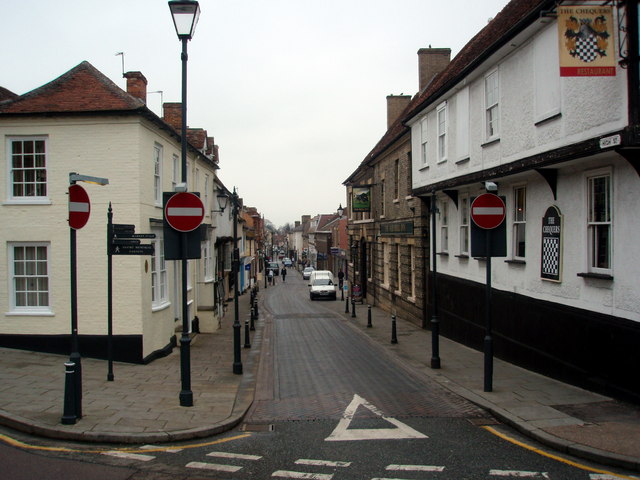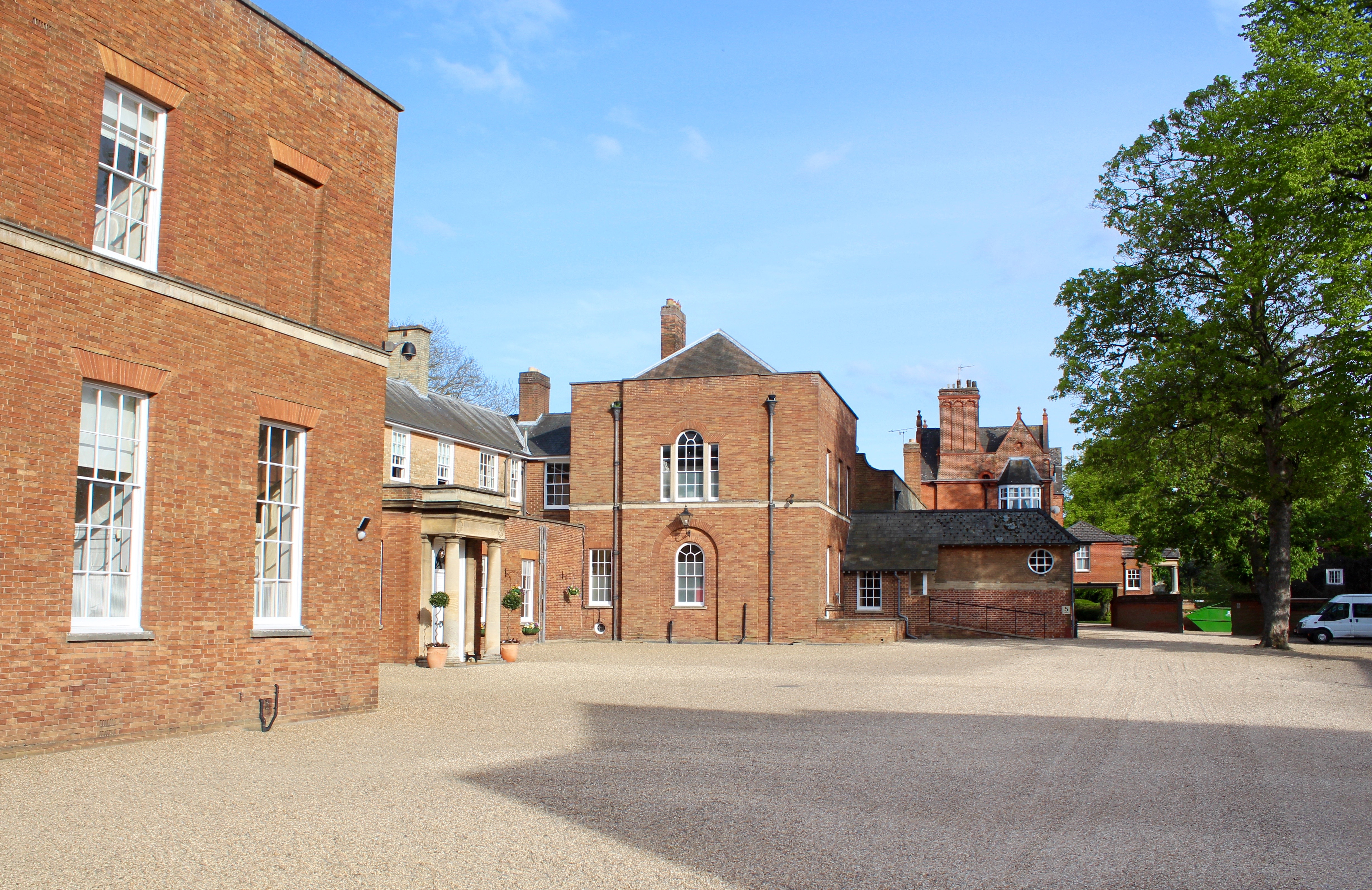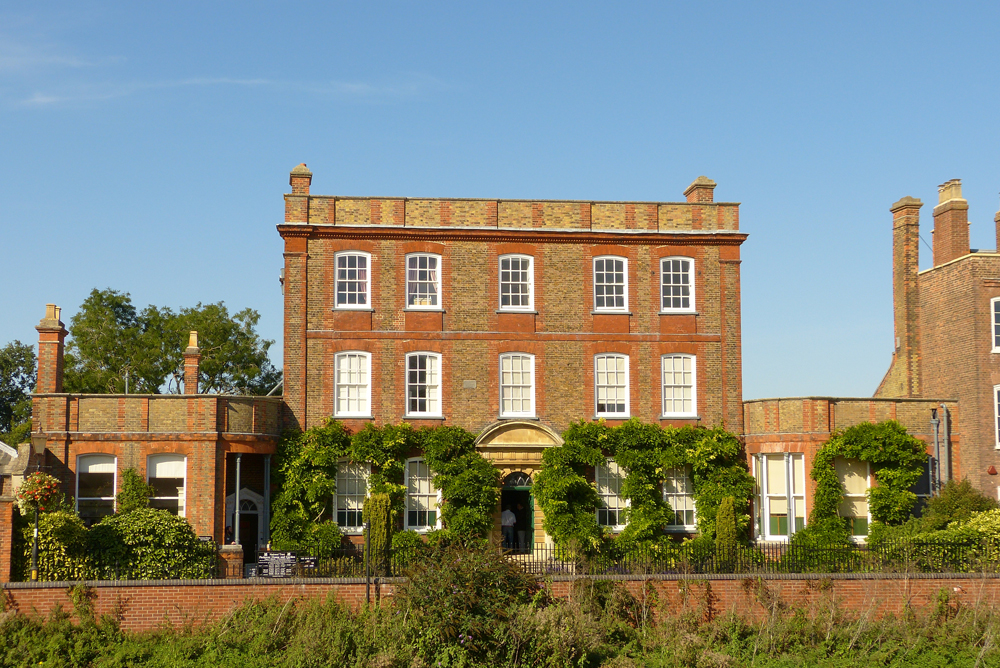|
High Sheriff Of Cambridgeshire And Isle Of Ely
Below is a list of High Sheriffs of Cambridgeshire and Isle of Ely since the creation of that county in 1965 until its abolition in 1974: *Before 1965 see Sheriff of Cambridgeshire and Huntingdonshire *1965–1966: Francis Wingate William Pemberton, of Trumpington Hall, Cambridge. *1966–1967: Colonel John Goodwyn Allden Beckett, of "Mallabar's", Brays Lane, Ely. *1967–1968: John Jacob Astor, of Hatley Park, Hatley St. George, Sandy, Bedfordshire. *1968–1969: Commander Alfred Francis Colenso Gray,of 54 Wimblington Road, March. *1969–1970: Arthur Gregory George Marshall, of Horseheath Lodge, Linton, Cambridge. *1970–1971: James Gee Pascoe Crowden, of Little Needham, 75 Harecroft Road, Wisbech. *1971–1972: Colonel Douglas Robert Beaumont Kaye, of Brinkley Hall, Newmarket *1972–1973: Edwin Harrison Morris, of Ancaster Farm, Stonea, near March. *1973–1974: Sir (Alfred) Stanley Fordham, of Melbourn Bury, near Royston, Herts. * After 1974 see High Sheriff of Camb ... [...More Info...] [...Related Items...] OR: [Wikipedia] [Google] [Baidu] |
Cambridgeshire And Isle Of Ely
Cambridgeshire and Isle of Ely was, from 1965 to 1974, an administrative and geographical county in East Anglia in the United Kingdom. In 1974 it became part of an enlarged Cambridgeshire. Formation The Local Government Act 1888 created four small neighbouring administrative counties in the east of England: Cambridgeshire, Isle of Ely, Huntingdonshire and the Soke of Peterborough. Following the Second World War, a Local Government Boundary Commission was formed to review county-level administration in England and Wales. The commission was of the opinion that counties needed to have a population of between 200,000 and 1 million to provide effective services. Accordingly, they recommended the amalgamation of all four counties into a single entity. The commission's recommendations were not carried out, however. The reform of local government was returned to in 1958, with the appointment of a Local Government Commission for England. The four counties were included in the East Mi ... [...More Info...] [...Related Items...] OR: [Wikipedia] [Google] [Baidu] |
James Crowden
James Gee Pascoe Crowden CVO (14 November 1927 – 24 September 2016) was an English former oarsman who competed for Great Britain in the 1952 Summer Olympics. He was Lord Lieutenant of Cambridgeshire. Crowden was born in Tilney All Saints, near Wisbech in 1927. He grew up in Peterborough and attended King's School before going on to Bedford School. He had his first victory at Henley Royal Regatta in 1946 as part of the school crew which won the Princess Elizabeth Challenge Cup, which that year was presented by the future Queen herself. He then went to Pembroke College, Cambridge. In 1951 he was part of the winning Cambridge boat in the Oxford and Cambridge Boat Race in the year when Oxford sank, and the umpire stopped the race and ordered a re-row the following Monday. He went to the United States to compete against American college crews at Yale and Harvard and won Silver Goblets at Henley partnering Brian Lloyd. Also in 1951, he won gold at the European Championships ... [...More Info...] [...Related Items...] OR: [Wikipedia] [Google] [Baidu] |
High Shrievalties In England
High may refer to: Science and technology * Height * High (atmospheric), a high-pressure area * High (computability), a quality of a Turing degree, in computability theory * High (tectonics), in geology an area where relative tectonic uplift took or takes place * Substance intoxication, also known by the slang description "being high" * Sugar high, a misconception about the supposed psychological effects of sucrose Music Performers * High (musical group), a 1974–1990 Indian rock group * The High, an English rock band formed in 1989 Albums * ''High'' (The Blue Nile album) or the title song, 2004 * ''High'' (Flotsam and Jetsam album), 1997 * ''High'' (New Model Army album) or the title song, 2007 * ''High'' (Royal Headache album) or the title song, 2015 * ''High'' (EP), by Jarryd James, or the title song, 2016 Songs * "High" (Alison Wonderland song), 2018 * "High" (The Chainsmokers song), 2022 * "High" (The Cure song), 1992 * "High" (David Hallyday song), 1988 * ... [...More Info...] [...Related Items...] OR: [Wikipedia] [Google] [Baidu] |
High Sheriff Of Cambridgeshire
This is a list of sheriffs and since 1974 high sheriffs of Cambridgeshire. The Sheriff is the oldest secular office under the Crown. Formerly the Sheriff was the principal law enforcement officer in the county but over the centuries most of the responsibilities associated with the post have been transferred elsewhere or are now defunct, so that its functions are now largely ceremonial. Under the provisions of the Local Government Act 1972, on 1 April 1974 the office previously known as Sheriff was retitled High Sheriff. Before 1154 *Tempore Regis Eduardi: Aluric Godricson, Orgar, Blacuin *1066: Elfric *1070–c.1090: Picot of Cambridge *c.1110–1122: Gilbert *c.1125–1129: Fulk *Michaelmas 1129: Richard Basset with Aubrey de Vere *c.1133: Fulk *1140: Payn From 1154 until 1635, appointees to the shrievalty held the joint office of Sheriff of Cambridgeshire and Huntingdonshire. 1636–1641 *3 October 1636: Sir John Carleton, 1st Baronet, of Cheveley *30 September 1637: ... [...More Info...] [...Related Items...] OR: [Wikipedia] [Google] [Baidu] |
Hertfordshire
Hertfordshire ( or ; often abbreviated Herts) is one of the home counties in southern England. It borders Bedfordshire and Cambridgeshire to the north, Essex to the east, Greater London to the south, and Buckinghamshire to the west. For government statistical purposes, it forms part of the East of England region. Hertfordshire covers . It derives its name – via the name of the county town of Hertford – from a Hart (deer), hart (stag) and a Ford (crossing), ford, as represented on the county's coat of arms and on the Flag of Hertfordshire, flag. Hertfordshire County Council is based in Hertford, once the main market town and the current county town. The largest settlement is Watford. Since 1903 Letchworth has served as the prototype Garden city movement, garden city; Stevenage became the first town to expand under post-war Britain's New Towns Act 1946, New Towns Act of 1946. In 2013 Hertfordshire had a population of about 1,140,700, with Hemel Hempstead, Stevenage, Watford ... [...More Info...] [...Related Items...] OR: [Wikipedia] [Google] [Baidu] |
Royston, Hertfordshire
Royston is a town and civil parish in the District of North Hertfordshire and county of Hertfordshire in England. It is situated on the Greenwich Meridian, which brushes the town's eastern boundary, and at the northernmost apex of the county on the same latitude as towns such as Milton Keynes and Ipswich. It is about north of central London in a rural area. Before the boundary changes of the 1890s, the boundary between Hertfordshire and Cambridgeshire ran east–west through the centre of town along the middle of Melbourn Street. The town has a population of 15,781 as of 2011.Office for National Statistics : ''Census 2011 : Parish Headcounts : North Hertfordshire'' Retrieved 2013-03-18 History [...More Info...] [...Related Items...] OR: [Wikipedia] [Google] [Baidu] |
Stonea
Stonea is a hamlet in Cambridgeshire, England, south east of March and part of the parish of Wimblington.Wimblington at Genuki.org.uk, accessed 20 September 2013 Stonea today consists of a scattered collection of farmsteads and houses, the majority sited along Sixteen Foot Bank, a man-made river which forms part of the . The largest settlement is on the bank near the Golden Lion pub. A former chapel is now a private residence. This part of Stonea is dissected by a staffed railway crossing ... [...More Info...] [...Related Items...] OR: [Wikipedia] [Google] [Baidu] |
Newmarket, Suffolk
Newmarket is a market town and civil parish in the West Suffolk district of Suffolk, England. Located (14 miles) west of Bury St Edmunds and (14 miles) northeast of Cambridge. It is considered the birthplace and global centre of thoroughbred horse racing. It is a major local business cluster, with annual investment rivalling that of the Cambridge Science Park, the other major cluster in the region. It is the largest racehorse training centre in Britain, the largest racehorse breeding centre in the country, home to most major British horseracing institutions, and a key global centre for horse health. Two Classic races, and an additional three British Champions Series races are held at Newmarket every year. The town has had close royal connections since the time of James I, who built a palace there, and was also a base for Charles I, Charles II, and most monarchs since. Elizabeth II visited the town often to see her horses in training. Newmarket has over fifty horse trai ... [...More Info...] [...Related Items...] OR: [Wikipedia] [Google] [Baidu] |
Wisbech
Wisbech ( ) is a market town, inland port and civil parish in the Fenland district in Cambridgeshire, England. In 2011 it had a population of 31,573. The town lies in the far north-east of Cambridgeshire, bordering Norfolk and only 5 miles (8 km) south of Lincolnshire. The tidal River Nene running through the town is spanned by two road bridges. Wisbech is in the Isle of Ely (a former administrative county) and has been described as 'the Capital of The Fens". Wisbech is noteworthy for its fine examples of Georgian architecture, particularly the parade of houses along the North Brink, which includes the National Trust property of Peckover House and the circus surrounding Wisbech Castle. History Etymology The place name 'Wisbech' is first attested in the ''Anglo-Saxon Chronicle'' for the year 656, where it appears as ''Wisbeach''. It is recorded in the 1086 Domesday Book as ''Wisbeach''. The name Wisbech is popularly believed to mean "on the back of the (River) Ouse", O ... [...More Info...] [...Related Items...] OR: [Wikipedia] [Google] [Baidu] |
Linton, Cambridgeshire
Linton is a village and civil parish in Cambridgeshire, England, on the border with Essex. The village is approximately southeast from the city and county town of Cambridge. The A1307 passes through the village. The civil parish population at the 2011 Census was 4,525. History The 1086 ''Domesday Book'' records Linton as "Lintone", with 27 households and two mills. The village has expanded since the 1960s and is now a dormitory village of Cambridge. The railway station was on the Stour Valley Railway between Shelford and Colchester, closed since 1967. The Wacky Races was a local annual event that occurred from 2002 to 2006 on the second Bank Holiday Weekend in May. It began on the extended Bank Holiday Weekend, which commemorated Queen Elizabeth II's 50th coronation anniversary, and raised money for local charities. Participants would race in comedic, homemade costumes and carts down the High Street, with one team mate stopping in each pub to have a pint, and then racin ... [...More Info...] [...Related Items...] OR: [Wikipedia] [Google] [Baidu] |
Sheriff Of Cambridgeshire And Huntingdonshire
This is an ''incomplete'' list of Sheriffs of Cambridgeshire and Huntingdonshire in England from 1154 until the abolition of the office in 1965. Exceptionally, the two counties shared a single sheriff. Sheriffs had a one-year term of office, being appointed at a meeting of the privy council generally held in February or March and holding office until the similar meeting in the next year.Sheriffs Act 1887 c.55 s.32 In 1648 it became the practice to rotate the office between inhabitants of Cambridgeshire proper, the Isle of Ely and Huntingdonshire. This was done in a three-year cycle, with an inhabitant of each area occupying the office in turn. Note: the years shown are the date of commencement of the sheriff's year of office. For example, the high sheriff appointed in March 1892 "for the year 1892" held office until March 1893. Before 1200 *Before 1154 – See High Sheriff of Cambridgeshire *1154: Richard Basset and Aubrey de Vere *1155–1161: Payn and Robert Grimball *1 ... [...More Info...] [...Related Items...] OR: [Wikipedia] [Google] [Baidu] |
Arthur Marshall (engineer)
Sir Arthur Gregory George Marshall, OBE, (4 December 1903 – 16 March 2007) was a British aviation pioneer and businessman, who served as the chairman of Marshall Aerospace between 1942 and 1989. Early life and education Arthur Marshall was born in Cambridge, England and was educated at The Perse School in Cambridge and at Tonbridge School in Kent, completing his education at Jesus College, Cambridge, where he earned a first-class degree in engineering.Reginald TurnillObituary: Sir Arthur Marshall ''The Guardian'', 26 March 2007. Retrieved 14 January 2023. He learned to fly in 1928, and shortly thereafter created an airstrip near his family's Cambridge home, which by 1929 had turned into a full-fledged airfield. Six years later, Marshall and his father, David, bought the land where the present Cambridge Airport now stands and started Marshall Aerospace. During World War II, Marshall's played a key role in training over 20,000 pilots and flying instructors. Under Sir Art ... [...More Info...] [...Related Items...] OR: [Wikipedia] [Google] [Baidu] |





